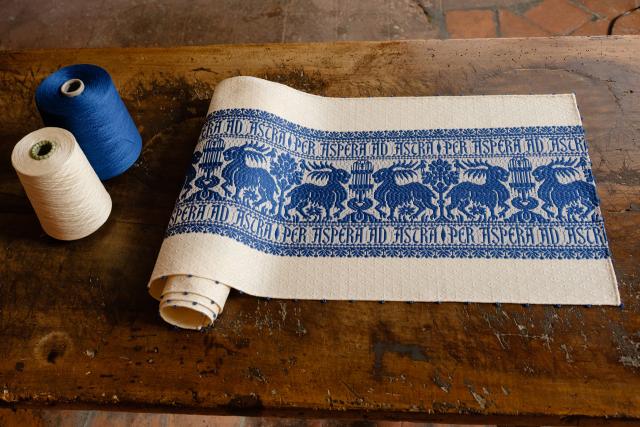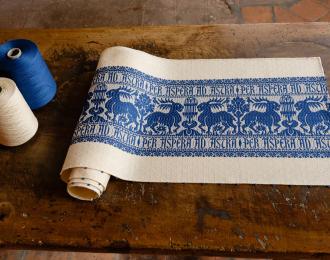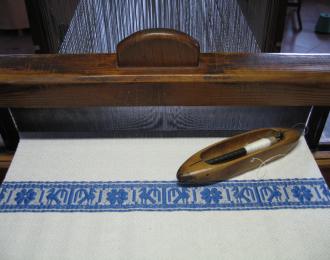Perugian tablecloths
Giuditta Brozzetti Museum and handweaving workshop

Perugia’s artisanal textile tradition has ancient roots. In the 12th century the city was already renowned all over Europe for excellence in the production of sacred altar cloths known as Tovaglie Perugine (Perugian tablecloths). Proof of their renown can be found in 13th to 15th century paintings by Simone Martini, Pietro Lorenzetti, Giotto, Ghirlandaio and even Leonardo da Vinci.
Over the centuries the linen collections of many major Italian and European churches and convents have given pride of place to Perugian altar cloths. They were also listed in notary deeds inventorying “valuable assets”, a testament to the domestic value of these fabrics. Another symbolic indicator of their worth appears where “Perugian tablecloths and pannili” are cited in the inventory of Catherine de Medici’s dowry on her marriage to Henry II of France.
The slow decline of the market for these textiles began in the 16th century; at the close of the 19th century only a few homes and convents in the Umbria and Marches regions were still able to subsist on their production for domestic use.

